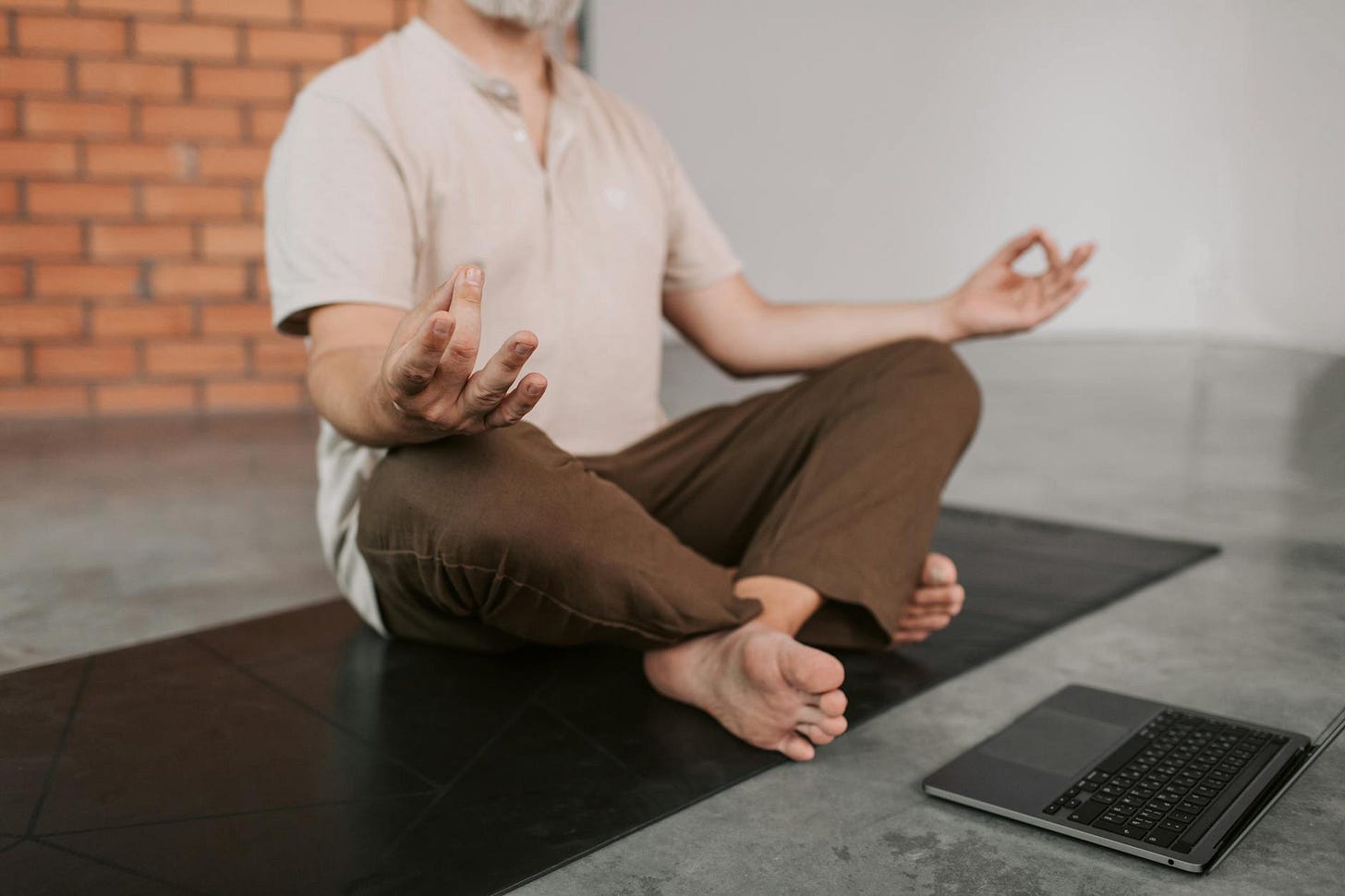In a world that glorifies hustle culture and constant productivity, the concept of rest has become almost taboo. But what if we told you that intentional rest could be the key to unlocking your full potential?
Feeling exhausted, overwhelmed, and burnt out? You're not alone. Many of us struggle to find balance in our fast-paced lives, often neglecting the crucial need for genuine rest. But here's the twist: intentional rest isn't about being lazy or unproductive. It's a powerful self-care practice that can transform your well-being and boost your overall performance.
In this blog post, we'll dive deep into the world of intentional rest, exploring its various types, how to incorporate it into your daily routine, and techniques to overcome common barriers. We'll also discuss practical strategies to measure its impact on your life. Get ready to revolutionize your approach to self-care and discover the incredible benefits of purposeful relaxation!
Understanding Intentional Rest
A. Definition and importance
Intentional rest is a deliberate practice of pausing and rejuvenating oneself, both mentally and physically. It goes beyond mere inactivity and involves consciously engaging in activities that promote relaxation, recovery, and renewal. The importance of intentional rest lies in its ability to counteract the effects of chronic stress, burnout, and overwhelming demands of modern life.
Key aspects of intentional rest:
Purposeful
Planned
Personalized
Proactive
Aspect Description Purposeful Focused on specific goals for rest and recovery Planned Scheduled and integrated into daily routines Personalized Tailored to individual needs and preferences Proactive Initiated before reaching exhaustion or burnout
B. Difference from passive relaxation
While passive relaxation may involve activities like watching TV or scrolling through social media, intentional rest is a more active and mindful approach to rejuvenation. It requires conscious effort and engagement in activities that truly replenish one's energy and well-being.
C. Benefits for mental and physical health
Intentional rest offers numerous benefits for both mental and physical health:
Mental health benefits:
Reduced stress and anxiety
Improved focus and concentration
Enhanced creativity and problem-solving skills
Better emotional regulation
Physical health benefits:
Improved sleep quality
Lowered blood pressure
Strengthened immune system
Reduced risk of chronic diseases
By prioritizing intentional rest, individuals can experience a significant improvement in their overall well-being and quality of life. Now that we understand the concept of intentional rest, let's explore the various types of deliberate rest practices that can be incorporated into daily life.
Types of Intentional Rest
Physical rest
Physical rest is crucial for maintaining overall health and well-being. It involves allowing your body to recover and rejuvenate. Here are some practical ways to achieve physical rest:
Taking power naps (15-20 minutes)
Practicing progressive muscle relaxation
Engaging in gentle stretching or yoga
Getting a massage or using a foam roller
Mental rest
Mental rest is essential for cognitive function and creativity. It allows your mind to recharge and process information more effectively. Consider these methods:
Practicing mindfulness meditation
Taking short breaks during work hours
Engaging in hobbies that don't require intense mental focus
Limiting screen time and digital consumption
Emotional rest
Emotional rest involves creating space to process and express feelings. It's crucial for maintaining mental health and building resilience. Try these approaches:
Journaling or expressive writing
Talking to a trusted friend or therapist
Practicing self-compassion exercises
Engaging in art therapy or creative expression
Social rest
Social rest is about finding balance in your interactions with others. It's important for both introverts and extroverts. Consider these strategies:
Setting boundaries on social commitments
Spending time alone in nature
Limiting social media use
Cultivating meaningful connections with a small group of friends
Spiritual rest
Spiritual rest involves connecting with something greater than yourself, whether through religious practices or personal beliefs. Here are some ways to achieve spiritual rest:
Practicing meditation or prayer
Spending time in nature
Engaging in acts of service or volunteering
Reflecting on personal values and purpose
Type of Rest Benefits Example Activities Physical: Improved energy, reduced pain Napping, gentle yoga Mental: Enhanced focus, creativity Meditation, hobbies Emotional: Better emotional regulation Journaling, therapy Social: Improved relationships Setting boundaries, nature walks Spiritua:l Increased sense of purpose Prayer, volunteering.
Now that we've explored the various types of intentional rest, let's look at how to incorporate these practices into your daily life.
Incorporating Intentional Rest into Daily Life
Creating a restful environment
To incorporate intentional rest into your daily life, start by creating a peaceful atmosphere that promotes relaxation. Consider the following elements:
Lighting: Opt for soft, warm lighting or natural light
Sound: Use white noise machines or calming music
Scent: Incorporate soothing essential oils or candles
Texture: Choose comfortable, cozy fabrics for seating and bedding
Element Restful Options Benefits Lighting Dimmer switches, salt lamps Reduce eye strain, promote melatonin production Sound Nature sounds, ambient music Mask disruptive noises, lower stress levels Scent Lavender, chamomile Enhance relaxation, improves sleep quality Texture Plush pillows, weighted blankets Increases comfort, reduces anxiety
Scheduling rest periods
Integrate rest into your daily routine by:
Setting specific times for short breaks throughout the day
Blocking out more extended periods for more profound relaxation
Using calendar reminders to prioritize rest
Adjusting your schedule to accommodate your natural energy levels
Unplugging from technology
Reduce digital distractions to enhance your rest experience:
Designate technology-free zones in your home
Set screen time limits on devices
Practice a digital sunset by avoiding screens before bedtime
Engage in offline activities during rest periods
Mindful breathing exercises
Incorporate simple breathing techniques to promote relaxation:
4-7-8 Technique: Inhale for 4 counts, hold for 7, exhale for 8
Box Breathing: Equal counts for inhale, hold, exhale, and hold
Diaphragmatic Breathing: Focus on deep belly breaths
Alternate Nostril Breathing: Balance left and right brain activity
Now that we've explored ways to incorporate intentional rest into daily life, let's examine some common obstacles that may hinder this practice and how to overcome them.
Overcoming Barriers to Intentional Rest
Guilt and productivity pressure
Many people struggle with feelings of guilt when taking intentional rest, often due to societal pressure to be constantly productive. To overcome this barrier:
Reframe rest as essential for productivity
Set realistic expectations for daily accomplishments
Practice self-compassion and positive self-talk
Time management strategies
Effective time management is crucial for incorporating intentional rest into your routine:
Strategy Description: Time blocking, allocate specific periods for rest and work. Pomodoro Technique: Work in focused bursts with short breaks in between. Priority matrix: Categorize tasks by importance and urgency
Dealing with distractions
Distractions can derail intentional rest efforts. Combat them by:
Creating a dedicated rest space
Using noise-canceling headphones or white noise
Implementing digital detox periods
Communicating boundaries with others
Changing societal perceptions
Shifting societal views on rest requires collective effort:
Lead by example, openly prioritizing rest
Educate others on the benefits of intentional rest
Advocate for rest-friendly policies in workplaces and schools
Share personal success stories of improved well-being through rest
By addressing these barriers, we can create a more rest-positive culture that values intentional downtime as much as productivity. Next, we'll explore specific techniques to help you implement deliberate rest in your daily life.
Intentional Rest Techniques
Progressive muscle relaxation
Progressive muscle relaxation (PMR) is a powerful technique that promotes intentional rest by systematically tensing and relaxing different muscle groups. This method helps reduce physical tension and mental stress, leading to a state of deep relaxation.
To practice PMR:
Find a comfortable position
Start with your toes and work your way up
Tense each muscle group for 5-10 seconds
Release and relax for 15-20 seconds
Move to the next muscle group
Muscle Group Tension Action Relaxation Feeling Feet Curl toes downward Warmth and heaviness Legs Straighten and lift Looseness and lightness Abdomen Tighten and hold Release and softness Hands Make fists Open and relaxed Arms Flex biceps Heaviness and warmth Shoulders Lift towards ears Drop and loosen Face Scrunch up Smooth and relaxed.
Guided imagery
Guided imagery is a relaxation technique that uses mental visualization to create a calm and peaceful state of mind. This practice involves imagining soothing scenes or experiences to promote relaxation and reduce stress.
Key elements of guided imagery:
Choose a quiet, comfortable space
Close your eyes and focus on your breath
Visualize a calming scene (e.g., beach, forest)
Engage all your senses in the visualization
Use a guided recording or script if needed
Restorative yoga
Restorative yoga is a gentle practice that focuses on relaxation and healing. It involves holding passive poses for extended periods, supported by props, to achieve deep rest and rejuvenation.
Benefits of restorative yoga:
Reduces physical and mental stress
Improves flexibility and body awareness
Enhances overall well-being and relaxation
Pose Duration Props Needed Child's Pose 5-10 minutes Bolster, blanket Legs-Up-the-Wall 10-15 minutes Wall, blanket Supported Bridge 5-10 minutes Block, bolster Reclined Bound Angle 10-15 minutes Bolster, blocks.
Meditation practices
Meditation is a powerful tool for intentional rest, offering various techniques to calm the mind and promote relaxation. Regular meditation practice can lead to improved focus, reduced stress, and enhanced overall well-being.
Popular meditation techniques:
Mindfulness meditation
Loving-kindness meditation
Transcendental meditation
Body scan meditation
Now that we've explored these intentional rest techniques, let's discuss how to overcome common barriers that may prevent us from incorporating these practices into our daily lives.
Measuring the Impact of Intentional Rest
Tracking energy levels
Measuring the impact of intentional rest starts with tracking your energy levels. Use a simple 1-10 scale to rate your energy throughout the day. Record these ratings in a journal or smartphone app, noting any patterns or fluctuations.
Time of Day Energy Rating (1-10) Notes Morning 7 After meditation Afternoon 5 Post-lunch dip Evening 8 After intentional rest
Monitoring stress reduction
Observe how intentional rest affects your stress levels. Consider using:
Heart rate variability (HRV) measurements
Cortisol testing (saliva samples)
Self-reported stress scales
Keep a log of stressful events and your ability to cope with them before and after implementing intentional rest practices.
Assessing sleep quality
Quality sleep is a crucial indicator of adequate rest. Track your sleep patterns using:
Sleep tracking apps or wearables
Sleep journals noting duration and perceived quality
Observing changes in sleep onset and nighttime awakenings
Evaluating overall well-being
To gauge the holistic impact of intentional rest:
Use validated well-being questionnaires (e.g., WHO-5 Well-Being Index)
Monitor productivity levels and task completion rates
Assess emotional resilience and mood stability
Note improvements in relationships and social interactions
By consistently measuring these aspects, you'll gain valuable insights into how intentional rest is benefiting your life. This data can help you refine your rest practices and motivate you to maintain this essential self-care habit.
Intentional rest is a powerful self-care practice that can significantly improve our overall well-being. By understanding its various forms, from physical and mental to emotional and social rest, we can tailor our approach to meet our unique needs. Incorporating intentional rest into our daily lives, overcoming barriers, and utilizing effective techniques are crucial steps in cultivating a sustainable rest practice.
As we've explored, the impact of intentional rest can be profound, leading to increased productivity, enhanced creativity, and improved mental and physical health. By prioritizing rest and making it a non-negotiable part of our routine, we can create a more balanced and fulfilling life. Remember, rest is not a luxury; it's a necessity. Start small, be consistent, and watch as intentional rest transforms your life for the better.









